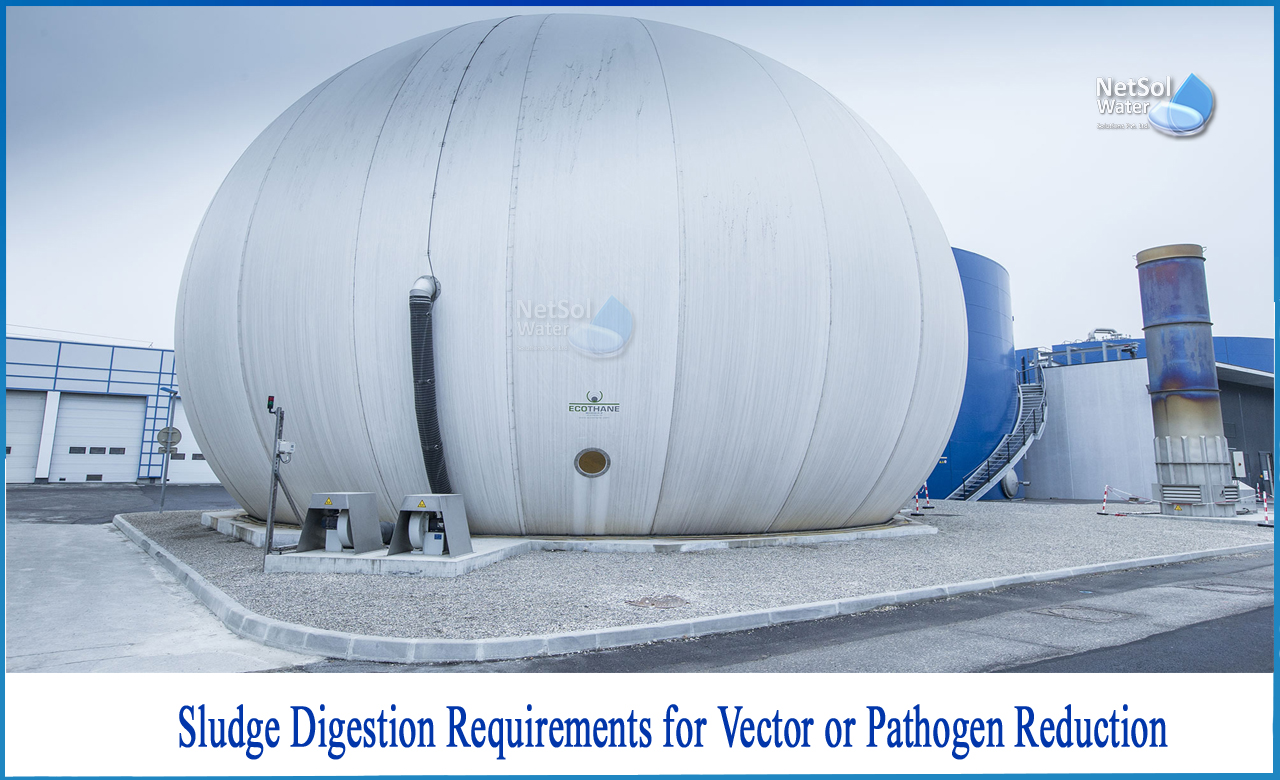What is Sludge Digestion?
Sludge digestion is a biological process that decomposes organic materials into stable compounds. Digestion decreases the overall quantity of solids, kills microorganisms, and makes dewatering and drying sludge simpler. It takes place in a sludge digestion tank under anaerobic conditions for a long time.
Sewage sludge cannot be applied directly to the land or placed on a surface disposal site unless it has met, among other requirements, the two basic types of requirements:
• Requirements to ensure reduction of pathogens;
• Requirements to limit the ability of sewage sludge to attract vectors like rodents, birds, insects, and other organisms that can transport pathogens.
What are Pathogens?
A pathogen is a living entity or substance that has the ability to cause illness. Unless otherwise stated, pathogens pertain solely to live creatures. Humans are infected by pathogens through a variety of routes, including ingestion, inhalation, and skin contact.The infective dosage, or the number of pathogenic organisms a human needs to be exposed to, in order to get infected, varies depending on the organism and the exposed individual's health state.
Why is Sludge Digestion Requirements for Pathogen Reduction?
Bacteria, viruses, protozoa, and helminths are the four principal forms of human pathogenic (disease-causing) organisms that may be found in sewage.
The species and number of pathogens found in sewage from a certain municipality as well as sewage sludge generated during domestic sewage treatment are determined by the local community's health condition and can fluctuate significantly over time. The level of pathogens present in treated sewage sludge (bio-solids) also depends on the reductions achieved by the wastewater and sewage sludge treatment processes. The pathogens presentin domestic sewage are associated primarily with insoluble solids.
Sludge Digestion or Stabilization Requirements including appropriate Pathogen and Vector attraction reduction
Some of the pro?cesses that significantly reduce pathogen levels in sludge include following:
a) Aerobic and anaerobic digestion,
b) Air drying,
c) Alkaline stabilization, and
d) Composting.
Processes that further reduce pathogens include beta ray irradiation, composting, gamma ray irradiation, heat drying, heat treatment, pasteurization, and thermophilic anaerobic digestion.
Sewage treatment plants typically use one of the following four processes to reduce pathogen levels in sludge-
1) Heat drying
2) Aerobic and anaerobic digestion
3) Composting
4) Alkaline stabilization
The pathogens in sludge pose disease risk only if there are routes by which the pathogens are brought into contact with humans or animals.
The main route for transport of pathogens is by vector transmission.
Vectors are any living organismswhich are capable of transmitting a pathogen from one organism to another either mechanically (by simply transporting the pathogen) or biologically and play a specific role in the life cycle of the pathogen. Insects, rodents, and birds would most likely be vectors for sewage sludge diseases.
Note:There are no straightforward methods for measuring vector attraction that are suitable.
Because heat treatment does not always break down the volatile materials in sewage sludge, it must be treated with an extra vector attraction reduction step. Vector attraction reduction can be achieved by processing the sewage sludge further with pH adjustment or heat drying.
Vector attraction reduction is accomplished by the use of one of the following:
1) Biological processes which breakdown volatile solids, reduces the available food nutrients for microbial activities and have potential of producing odour;
2) Chemical or physical conditions which can stop microbial activity;
3) Physical barriers between vectors and volatile solids in the sewage sludge.
What can we offer?
Netsol Water is one of India's major water and wastewater management company, specialized in the design, manufacture, and delivery of custom-made treatment systems, industrial machinery, and luxury amenities for the water industry. We can customize WTPs/WWTPs that will cater to all needs and at the same time effectively treat different types of wastewater.



